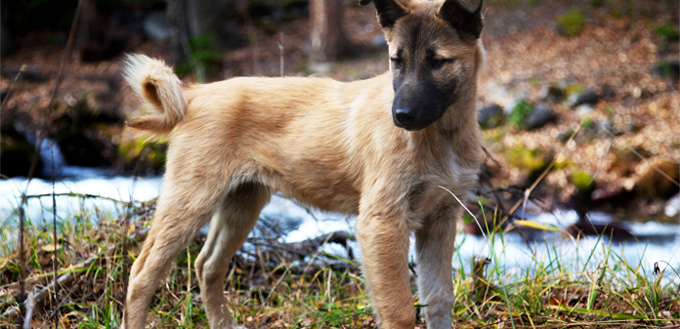You may have an extremely active dog that seems like he has unlimited energy for playing. You might even joke with your family and friends that he has ADHD – attention deficit hyperactivity disorder. However, have you ever wondered can canines really suffer from this condition? That is what we are trying to figure out in this article, so let’s start our journey.
What Is Hyperkinesis?
If we are talking about people, there are many children and adults who are diagnosed with ADHD. In fact, it is one of the most common human psychiatric conditions. Dogs can also experience a form of ADHD which is, in their case, called hyperkinesis. It may be interesting to know that this condition is not common in dogs and nowhere as frequent as in humans. However, some experts attribute this to the fact that many pet owners are not aware that they are living with a hyperactive pooch.

According to scientists, hyperkinetic dogs can get excited easily, but that is something you can relate most dogs too. The unique thing characterizing canines suffering from hyperkinesis is the lack of ability to react to external stimuli. In other words, you may create an unchanging and stable environment, and they will still be overwhelmingly distracted, constantly alert, easily bored and physically aroused.
Although it is not called ADHD, you could say that hyperkinesis is a form of that condition that attacks dogs since the neurological basis of these disorders are largely similar. Here is how you may recognize a pooch that is suffering from this disorder:
- It will be almost impossible for him to focus
- He will be extremely impulsive
- Administration of stimulants may make him calm down and become less distracted
The last point is interesting, and it can be a way the vet can confirm your dog is suffering from ADHD. Some of them resort to administering a small and safe dose of appropriate amphetamine and wait to see its effects. Normal dogs will display an excitement increase and elevated resistance to restraining, while hyperkinetic pooches’ heart rate will drop, as well as their activity levels and excitement.
How to Test If You Have a Dog with ADHD
It is only the veterinarian that can confirm the diagnosis, but if you are suspecting that your dog is suffering from ADHD, there is a test you can conduct at home. First of all, your canine shouldn’t eat four hours prior to testing to ensure more accurate results. Next, take him out for a run, but avoid exhausting him completely. Finally, put a leash on your Fido and take your clicker and a bag full of treats that your pet loves. The perfect location for the test is a room with almost no distractions (indoors) and, once you have everything ready, the test may start.
For an entire minute, click the training clicker and feed your dog the treat. Try to give him as much treats as possible and only make sure that your pet focuses on you. It doesn’t matter if he sits or lies down or if you are giving him the treats or throwing them on the floor, but make sure that he doesn’t have to jump to get them.
After a full minute expires, reduce the number of treats two times. If you managed to give him 30 treats during the first 60 seconds, you should aim for 15 treats during the next minute. After two minutes of keeping this pace, slow down the number of treats by five per minute. Do not forget to use your clicker the entire time as the clicking sound is important.
The next step is to continue using the clicker – treat mechanism, but instead of immediately giving him the treat, hold off for two seconds. If that works, continue increasing the treat delay up to five seconds. Feel free to play during the next four or five minutes and vary the time between clicking and treating. It may be immediately, but you can go as high up as seven seconds. The crucial thing is to keep things random and avoid making a pattern.
At some point, you should stop clicking and treat your dog for approximately 30 seconds. After that, wait for your dog to look at you to click the clicker and give him a treat while making sure to stick to a random schedule. Make sure that the entire exercise lasts for (at least) 10 minutes.
If your dog has made it through the entire exercise with his attention span only occasionally lapsing, there is no need to be worried. However, if you lost him completely in the process, perhaps it is time to schedule that test in the vet’s office.

Tips on Dealing with a Hyperactive Dog
So, you got an official confirmation that your dog has ADHD and you pretty much do not know where to go from there. Your veterinarian should be there to explain all the details about the disorder and how to cope with a hyperkinetic dog. You will have to make some adjustments in various areas of their lives and here are some tips to get you started.
He Needs Lots of Exercises
Your dog will need a lot of exercises, and that goes beyond regular daily walks and allowing him to run as much as he wants in the backyard. You need to take things one step further in making sure that he is physically active as it is a lot harder to tire out a hyperactive pooch. For example, when you are playing fetch, use a ball launcher to increase the distance that your Fido needs to cover when getting the ball back. If you like riding a bike, buy a special canine bike leash and take him with you for a ride. If you are an athlete, you can jog together, while rollers could be a convenient hack to increase your speed when taking your pup out.
Related Post: Best Automatic Fetch Machine
Think about Mental Stimulation
ADHD doesn’t only require a physical challenge, but also a mental one. This is why you should consider signing him up for classes such as agility training or obedience. It doesn’t matter if you think your dog is already obedient and well-behaved, it’s the training that will provide him stimulation he needs to spend his mental energy. When he is at home, consider employing his brain by offering various kinds of puzzles or teaching him fresh tricks. You can also give him toys that dispense treats as they may challenge him in a mental way. If you are going for a walk, make it a hike to a place where you’ve never been before. This will give your dog the opportunity to explore new surroundings, which should keep him preoccupied.
Related Post: Best Dog Puzzle Toys
Other Useful Tips
Here are some other things that you should consider to deal with a dog that has ADHD:
- Discuss proper nutrition with your vet as certain food may be what is triggering his restlessness. The doctor may also recommend supplements such as valerian root, GABA, or L-theanine
- There is no need to punish him as dogs do not react well to punishment. Instead, focus on modifying his behavior through positive reinforcement
- Teach him to be calmer by teaching him to sit when he is waiting for his dinner or when he is waiting for the yard door to open

What Not to Confuse with ADHD
There are some situations that might lead you to believe your dog has ADHD, but that cannot be farther from the truth. Here are some things that dog owners often confuse with this disorder:
- He is just a puppy – puppies tend to have spells when their energy levels seem to be going through the roof. During this time, it seems unable to control them and make them obedient, but this is perfectly normal. After all, isn’t it the same with human children? You need to be patient when training your puppy as it will take time to teach them to respond perfectly to your commands. The good news is that, even though your pup seems hyperactive, hours of physical activity (or intense training) will make them sleep like a baby
- He has a lot of energy – this is often seen in young adults and less frequently in senior dogs. However, depending on the breed and the individual, your dog may be showing extreme activity levels. It may be because it is in his genes to ask for a bigger challenge than his daily routine offers. In most cases, you can help them with intense training or other activities that will help them spend the extra energy they have
- Pseudo-hyperactivity – there might have been a sudden need to keep your pet confined for hours. During that period, he accumulated a high level of physical and mental energy and, once you let him go, he starts being all hyperactive. This situation will look like he wants to do it all at once and push 24 hours of playtime into 30 minutes. In most cases, this is just a one-time thing, and it’s no reason to worry
Source:
- Debra Horwitz, DVM, Disobedient, Unruly and Excitable Dogs, VCA Hospitals





